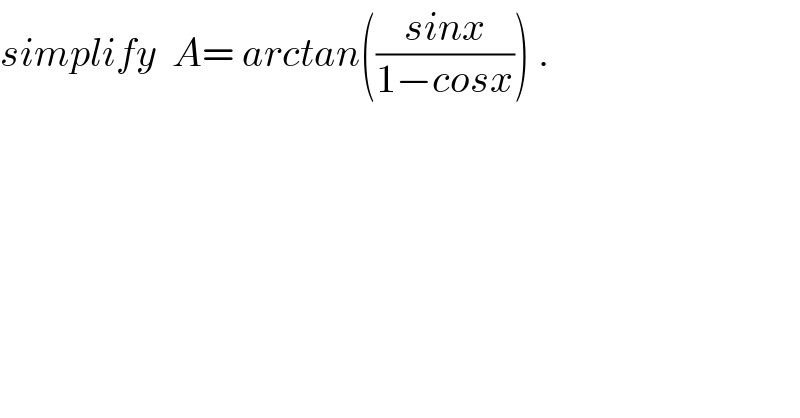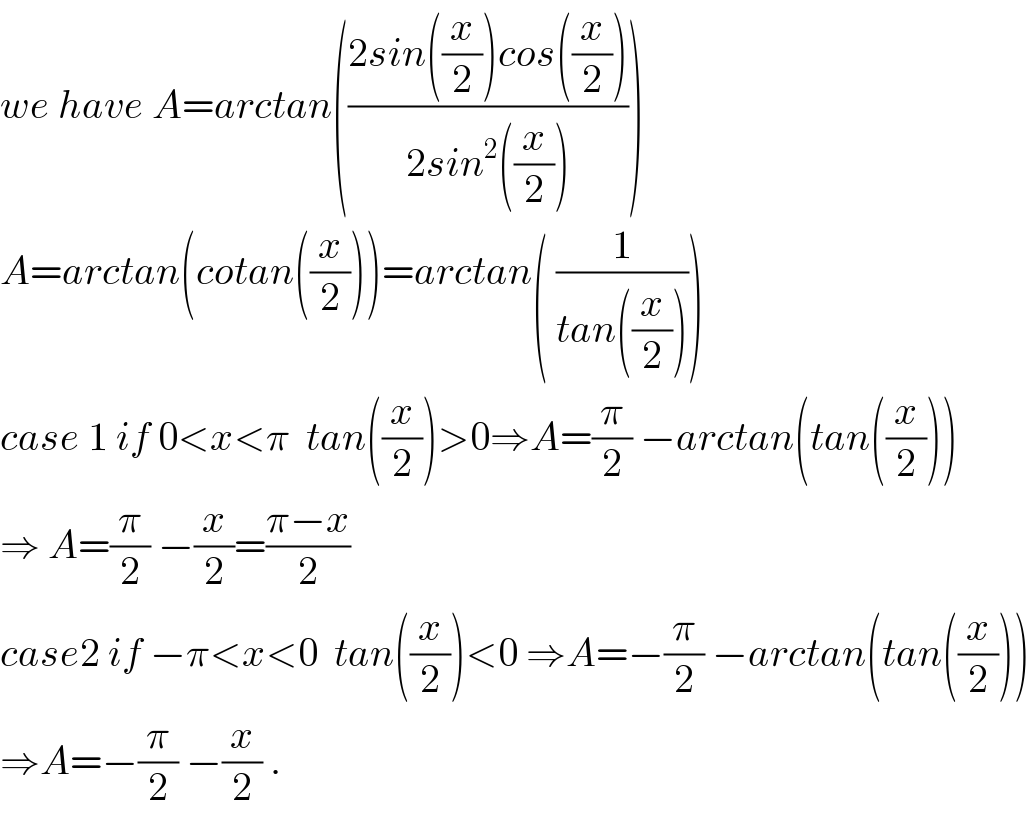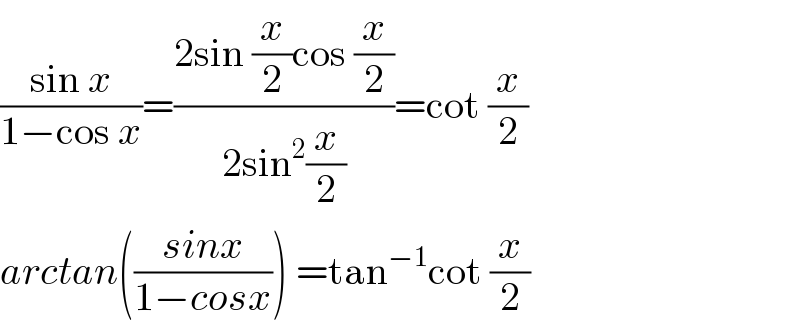
Question and Answers Forum
Question Number 30528 by abdo imad last updated on 22/Feb/18

Commented by abdo imad last updated on 23/Feb/18

Answered by prakash jain last updated on 22/Feb/18

Commented by prakash jain last updated on 23/Feb/18

Commented by mrW2 last updated on 23/Feb/18

Commented by mrW2 last updated on 23/Feb/18
![for 0<x<2π: A=(1/2)(π−x) generally: A=(1/2)(π+2π[(x/(2π))]−x) e.g.: x=6.5π [(x/(2π))]=[((6.5π)/(2π))]=3 A=(1/2)(π+6π−6.5π)=(π/4)](Q30611.png)
